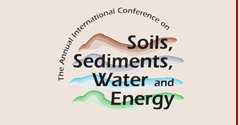Article Title
A Comparion of Three Soil Characterization Methods on a Soil Formed in Sandy Glacial Outwash
Abstract
A field scale test was performed to evaluate three different soil sampling approaches. These included a USDA-NRCS pedon approach, a multiple increment approach, and a five-point composite approach. A 484 ft2 plot in an upland glacial outwash plain in Falmouth, Massachusetts was subjected to these three soil characterization methods. The USDA-NRCS approach involved the excavation of a soil pit (or pedon) with soils described according to the methods outlined in the Soil Survey Manual (Soil Survey Staff, 1993). Natural soil horizons were identified and samples were collected to a depth of 4 ft. For the multiple increment samples, a 30-point grid was installed and samples were collected using a 1 in push probe. For the five-point composite, a five-point grid was installed within the plot and samples were collected with a 2.5 in bucket auger. Both the multi-increment and the five-point composite samples were taken at arbitrary depths of 0-3 in, 3-6 in, 9-12 in, 21-24 in, and 33-36 in. All samples were subjected to particle size and organic carbon analyses. The upland soil shows the effects of podzolization with some translocation of organic matter with depth in the pedon. The particle size analysis of the pedon confirms a sandy glacial outwash with a thin layer of loess in the upper horizons. The particle size analysis also shows a clear pattern of decreasing silt content with depth in the pedon. The organic carbon analysis shows both compositing approaches have greater organic carbon contents at depth compared to the soil pedon. The compositing approaches also show higher silt contents with depth compared to the soil pedon. The enrichment of organic carbon and silt in the lower samples may indicate a mixing of surface materials with depth for both composite methods.
Recommended Citation
Morris, Michael W.; Comeau, Aimee; Ammons, John T.; Blair, Ryan; Lu, Changsheng; and Roberts, Caroline
(2010)
"A Comparion of Three Soil Characterization Methods on a Soil Formed in Sandy Glacial Outwash,"
Proceedings of the Annual International Conference on Soils, Sediments, Water and Energy: Vol. 15, Article 28.
Available at:
https://scholarworks.umass.edu/soilsproceedings/vol15/iss1/28
